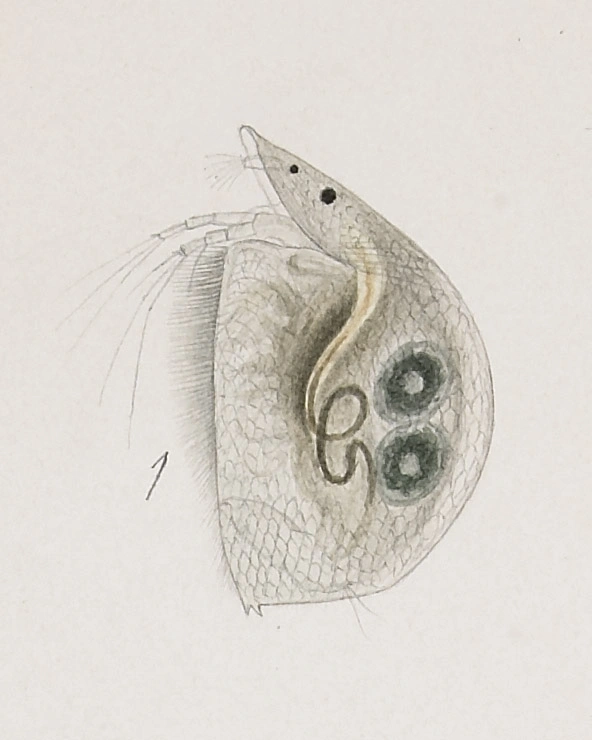Graptoleberis testudinaria
The head shape of Graptoleberis testudinaria is characteristic in being wide and spatula shaped. The majority of records are from South Norway and it is very tolerant towards the environmental conditions.
Key characteristics
Graptoleberis testudinaria (female)
Originally, Baird ascribed G. testudinaria to the genus Alona. Sars, on the other hand, found it so distinguished from all other chydorids that a new genus was established for this species. Especially the shape of its head is characteristic in being wide and spatula shaped. Its carapace has penta- and hexagonal cells. The postabdomen is small and has small bundles of hairs instead of denticles, while the basal spine is very small compared to other chydorids. Its colour is light grey.
Female: Length 0.4–0.7 mm
Male: Length 0.4–0.5 mm
Ecology and distribution
G. testudinaria is found in ca 13 % of the water bodies. The majority of records are from South Norway where it is randomly distributed. In North Norway it has a more scattered distribution. It occurs from sea level (4 m a.s.l.) and up to 1377 m a.s.l., with its highest frequency in lakes below 500 m a.s.l. It occurs in water bodies of all sizes and in all sorts of vegetation, as well as on stony and sandy bottom. pH varies between 3.9 and 8.6, and it occurs with high frequencies at both low (<5.0) and high pH (>7.0). G. testudinaria has been found in both electrolyte rich (84 mS/m), and in dilute water (0.5 mS/m).
| Vitenskapelig navn | < 4,5 | 4,5 - 4,9 | 5,0 - 5,4 | 5,5 - 5,9 | 6,0 - 6,4 | 6,5 - 7,0 | 7,0 - 7,4 | > 7,5 |
|---|---|---|---|---|---|---|---|---|
| 10 | 15,1 | 11,3 | 13,1 | 17 | 11,5 | 17,2 | 24,6 |
| Vitenskapelig navn | < 1,0 | 1,0 - 1,4 | 1,5 - 1,9 | 2,0 - 2,9 | 3,0 - 3,9 | 4,0 - 4,9 | 5,0 - 6,9 | 7,0 - 9,9 | > 10,0 |
|---|---|---|---|---|---|---|---|---|---|
| 2,9 | 5,6 | 11,2 | 14 | 14,5 | 16,7 | 15,9 | 20,4 | 23,3 |
| Vitenskapelig navn | < 0,01 | 0,01 - 0,09 | 0,1 - 0,9 | 1,0 - 9,9 | 10,0 - 99 | 100 - 999 | > 1000 |
|---|---|---|---|---|---|---|---|
| 12,7 | 12,9 | 10,4 | 16,5 | 10,8 | 13,2 | 19,6 |
| Vitenskapelig navn | < 100 | 100-299 | 300-499 | 500-699 | 700-999 | >1000 |
|---|---|---|---|---|---|---|
| 13,1 | 22,7 | 13,4 | 8,6 | 2,9 | 2,1 |
